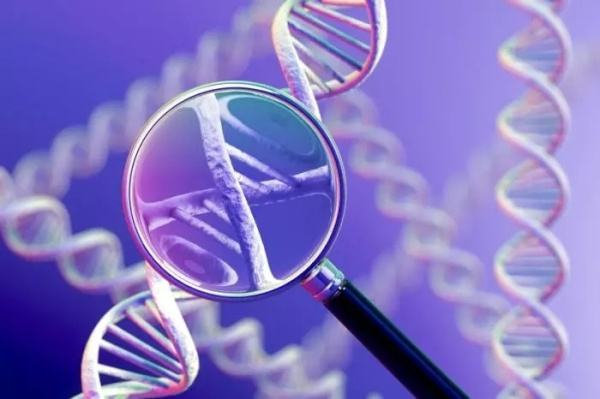
A new public-private consortium is collaborating on a project whose chief objective is an FDA-qualified composite biomarker for diagnosing nonalcoholic steatohepatitis (NASH). If all goes as planned, physicians and researchers will for the first time have a reliable, non-invasive diagnostic tool for NASH, and a means of identifying which patients will progress to serious complications that may require a liver transplant, says Tania Kamphaus, MSc, PhD, scientific program manager for metabolic disorders with the Foundation for the National Institutes of Health (FNIH).
In October 2017, the executive committee of the FNIH's Biomarkers Consortium formally approved the idea of tackling development of a NASH biomarker panel as a group project in the pre-competitive space, says Kamphaus. After a year of fundraising, the Non-Invasive Biomarkers of Metabolic Liver DiseasE (NIMBLE) project had $13 million in industry contributions to stage the launch.
The gold standard for diagnosing NASH currently is a liver biopsy, which is "extremely painful, time consuming and expensive [$1,500-$2,700], and carries a small risk of mortality," says Kamphaus. No one wants to get a hole punched in their liver just to find out if they have a progressive disease with no cure. Sampling errors are a concern with biopsies because only a small fraction of the liver gets tested.
By the time a biopsy is even up for discussion, patients could be near liver failure because NASH progresses slowly and silently, she explains. If diagnosed sooner rather than later, doctors could intervene while the disease is still reversible and not life-threatening.
Up to 16.5 million people in the US are living with NASH and its prevalence is increasing owing to a rising incidence of obesity and type 2 diabetes mellitus. It is expected to be the top reason people end up on the liver transplant list by next year, says Kamphaus.
Many NASH biomarkers are in various stages of development, but none are currently used in clinical practice, she says. A small group of blood- and imaging-based diagnostic biomarkers have been robustly tested and look promising, but only in slivers of populations. While they each quantify different aspects of the disease, such as inflammation and fibrosis, they have all demonstrated predictive value for NASH diagnosis and progression.
The idea is to test this select group of biomarkers to see how well they perform in the hands of NIMBLE researchers, individually and in combination, relative to liver biopsy, continues Kamphaus. Those that "make the cut" will become part of the composite biomarker used in a clinical trial that is planned to start at the end of 2020.
NIMBLE's goal is to collect the necessary data to qualify biomarkers through the FDA's Biomarker Qualification Program, she says.
Candidate Biomarkers
The Biomarkers Consortium is focused on standardizing, qualifying and validating biomarkers for specific diseases, says Kamphaus. In each therapeutic area, cross-functional, multi-stakeholder teams with representatives from pharmaceutical companies, device manufacturers, the NIH and FDA agree on the most beneficial areas to generate drug development tools and provide their scientific and practical expertise toward that end. "The only way to do this work well is not have any new IP [intellectual property] generated in the process," she says.
Within the metabolic disorders group, NIMBLE is the largest of six projects currently underway, says Kamphaus. The decision to pursue a noninvasive biomarker for NASH that could be validated against the gold standard was a no-brainer because the biopsy-only option is measurably hurting clinical care as well as clinical trial recruitment. Moreover, sampling errors are a concern with biopsies because only a tiny fraction of the whole liver tissue gets tested.
Contracts are currently being finalized with companies involved in the first phase of the NIMBLE project, says Kamphaus, which will include several circulating biomarkers and imaging biomarkers identified in 2017 and possibly one or two newer ones that have since shown promise. Additional biomarkers will be selected by consensus voting among private and public sector representatives on the project team who are free of conflicts.
The project begins with a retrospective study running six to nine months that will measure biomarker performance on existing samples, says Kamphaus. Results are expected to be released next spring. Later this year, the clinical operations team for NIMBLE will start putting together a protocol for the subsequent prospective clinical trial that will involve the high performing biomarkers and patients who have had NASH documented via liver biopsies. "We'll follow whatever the NIMBLE panel is for the duration of a year and have another biopsy at the end to confirm our findings."
Site selection for the trial should begin toward the end of 2020, says Kamphaus. If so, a readout from the study is possible by 2023.
A secondary study endpoint is to look at how participants respond to treatment interventions they receive during the trial period, she adds. "It has been pretty well established that NASH is a progressive disease. But the rate of progression varies, so mortalities are linked to how long someone is able to live with NASH."
The core team for the NIMBLE project includes three academic institutions with 10 representatives, including five principal investigators, and several biomarker companies that are donating their services for the analysis work. "I was delighted and a little bit surprised by how willing people were to look at the big picture and move this forward," says Kamphaus.






 Go back
Go back
